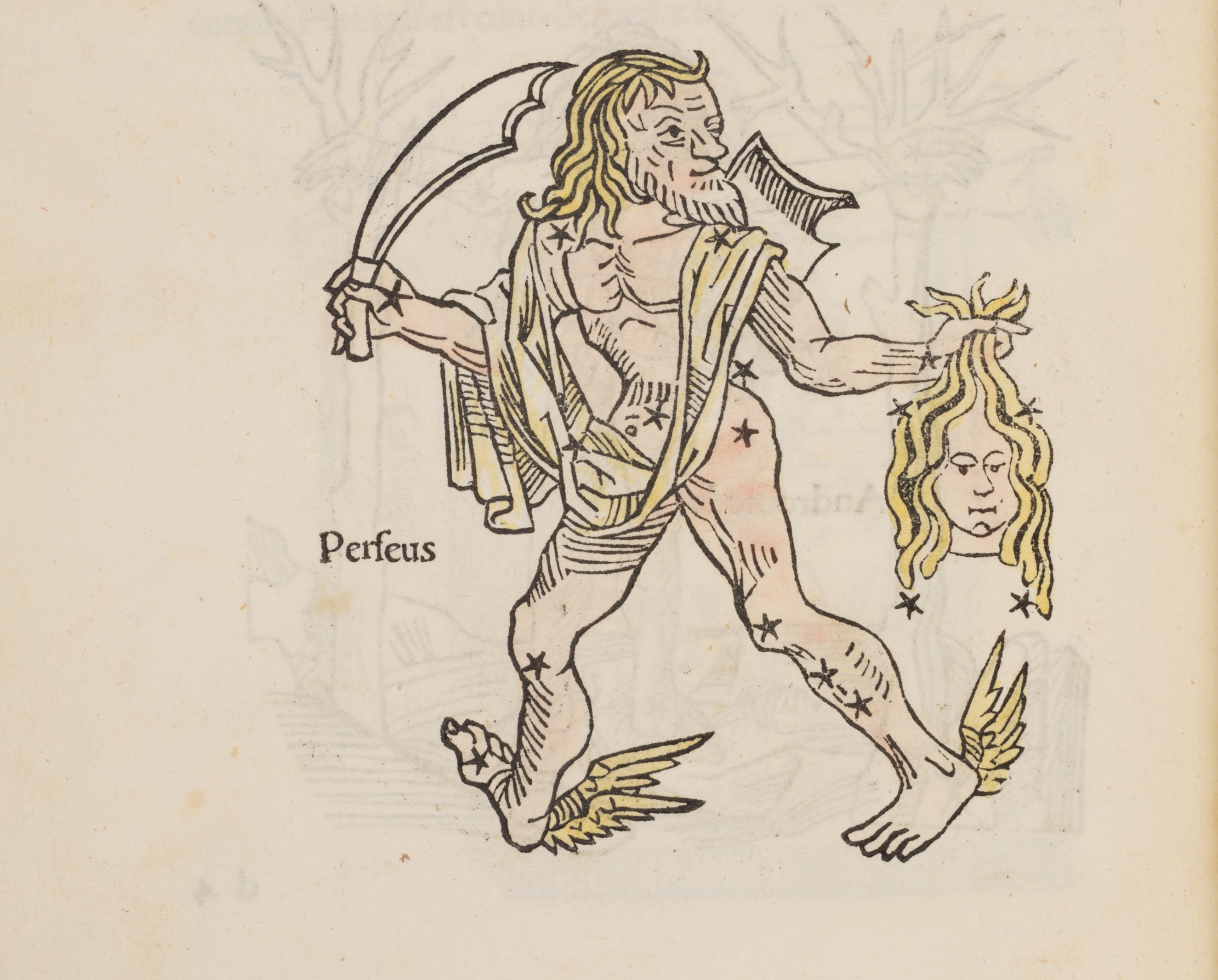Per - Perseus the Hero
Intro and Visual description
Resembles a backward lambda. Located in the Milky Way, between Andromeda/Cassiopeia and Auriga/Taurus.
Look for the Perseid meteor shower on August 12.
Special Stars
Perseus contains no first-magnitude star, but a pair of beautiful binocular star clusters, known as the Double Cluster.
Mirphak (alpha-Persei). Magnitude: 1.8. Distance: 620 LY.
Algol (beta-Persei), the demon star, the Medusa’s eye. Distance: 95 LY. Magnitude: 2.1 usually, fading every 2.9 days; in four hours it falls to magnitude 3.4; after 20 minutes it brightens. This exact regularity was discovered by G. Montanari in 1669. In 1782 the astronomer John Goodricke correctly suggested that Algol is a binary, with a faint companion that passes in front of Algol periodically making it wink. Following the changes of Algol makes for an interesting night with binoculars or even the unaided eye; check Sky and Telescope for the times of its dimming.
Origin and History
Perseus is included in the ancient star catalogs of Eudoxos of Knidos, Aratos of Soli, and Ptolemy.
Skylore, Literature and Culture
Usually depicted carrying the detached head of the demon-woman Medusa, or Gorgon, who grew snakes for hair. Perseus married Andromeda after saving her from Cetus with the aid of Pegasus (see Andromeda).
Movies: Clash of the Titans; Internet movie database.








